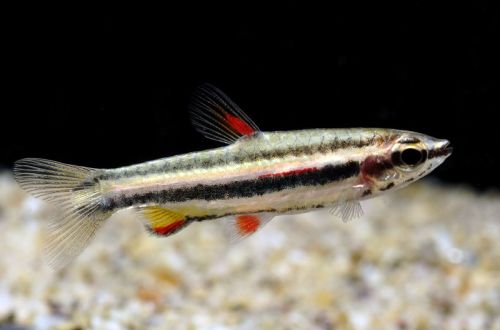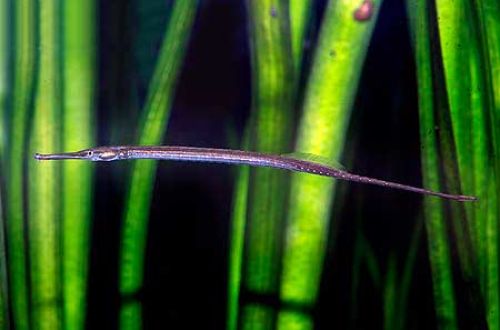
Nannostomus Marginatus
The dwarf Nannostomus or Nannostomus Marginatus, scientific name Nannostomus marginatus, belongs to the Lebiasinidae family. Easy to keep active fish. They can become an ornament to almost any freshwater aquarium. Suitable for aquarists of all experience levels.

Contents
Habitat
It originates from South America from the territory of modern Guyana and Suriname, as well as in the lower and middle Amazon basin in Peru, Colombia and Brazil. They live in small rivers and streams with a slow current, as well as swamps. These fish are often found in flooded forests, floodplain lakes. They prefer regions with dense aquatic vegetation and many snags and fallen leaves.
Brief information:
- The volume of the aquarium – from 40 liters.
- Temperature – 22-28°C
- Value pH — 4.0–7.0
- Water hardness – soft (1-10 dGH)
- Substrate type – any dark
- Lighting – subdued
- Brackish water – no
- Water movement – little or no
- The size of the fish is up to 2.5 cm.
- Meals – any
- Temperament – peaceful
- Keeping a flock of at least 8-10 individuals
Description
Miniature, if not tiny fish. Adult individuals reach a length of only 2.5 cm. Sexual dimorphism is weakly expressed. There are no obvious differences between male and female. The color is gray with horizontal stripes of black and white. The fins are red.
Food
They accept all types of food of a suitable size. It is permissible to use only dry products – flakes, granules, etc. If desired and possible, you can diversify the diet with small crustaceans, such as daphnia and brine shrimp.
Maintenance and care
The size of the Dwarf Nannostomus allows them to be kept in nano-aquaria with a volume of 10–20 liters. The design uses a dark substrate, several snags and a large number of plants, including floating ones. The latter serve as an additional means of shading the aquarium. The lighting level is subdued.
Maintaining stable water conditions is essential. Mandatory procedures are regular cleaning of the substrate from organic waste and weekly replacement of part of the water (10–15% of the volume) with fresh water. When choosing a filtration system, preference should be given to filters that form a low flow, such as airlift filters with a sponge.
A good effect is achieved by adding Indian almond leaves or its essence. They give the water a tea shade and saturate it with tannins, characteristic of the natural environment.
Behavior and Compatibility
Peaceful and even timid fish lives in flocks, so it is recommended to purchase a group of at least 10 individuals. No intraspecific conflicts were noted. Compatible with other non-aggressive species of comparable size. They can also get along with larger fish that live on the bottom, as they stay in the upper or middle layers of the water.
Breeding / Reproduction
Under favorable conditions, the Dwarf Nannostomus is able to breed in a home aquarium. A certain number of fry can survive even without the participation of an aquarist. To increase their chances, the breeding process should be taken under control.
Clusters of dense, low-growing plants, such as Java moss or artificial spawning plants, are placed at the bottom. Among them, fish lay eggs. Parental instincts are poorly developed, so future eggs are likely to be eaten unless they are moved to a separate tank with identical conditions.
Indian almond leaves from the main aquarium are placed in this tank, of course, if they were there. In the process of decomposition, colonies of microorganisms are formed in the leaves, such as infusori shoes, which are an excellent micro-feed for newly hatched fry. Alternatively, you can use specialized food with particles of 5-50 microns. As the fish mature, they will be able to take brine shrimp nauplii.
Fish diseases
Health problems arise only in case of injuries or when kept in unsuitable conditions, which depresses the immune system and, as a result, provokes the occurrence of any disease. In the event of the appearance of the first symptoms, first of all, it is necessary to check the water for the excess of certain indicators or the presence of dangerous concentrations of toxic substances (nitrites, nitrates, ammonium, etc.). If deviations are found, bring all values back to normal and only then proceed with treatment. Read more about symptoms and treatments in the Aquarium Fish Diseases section.





